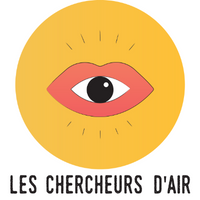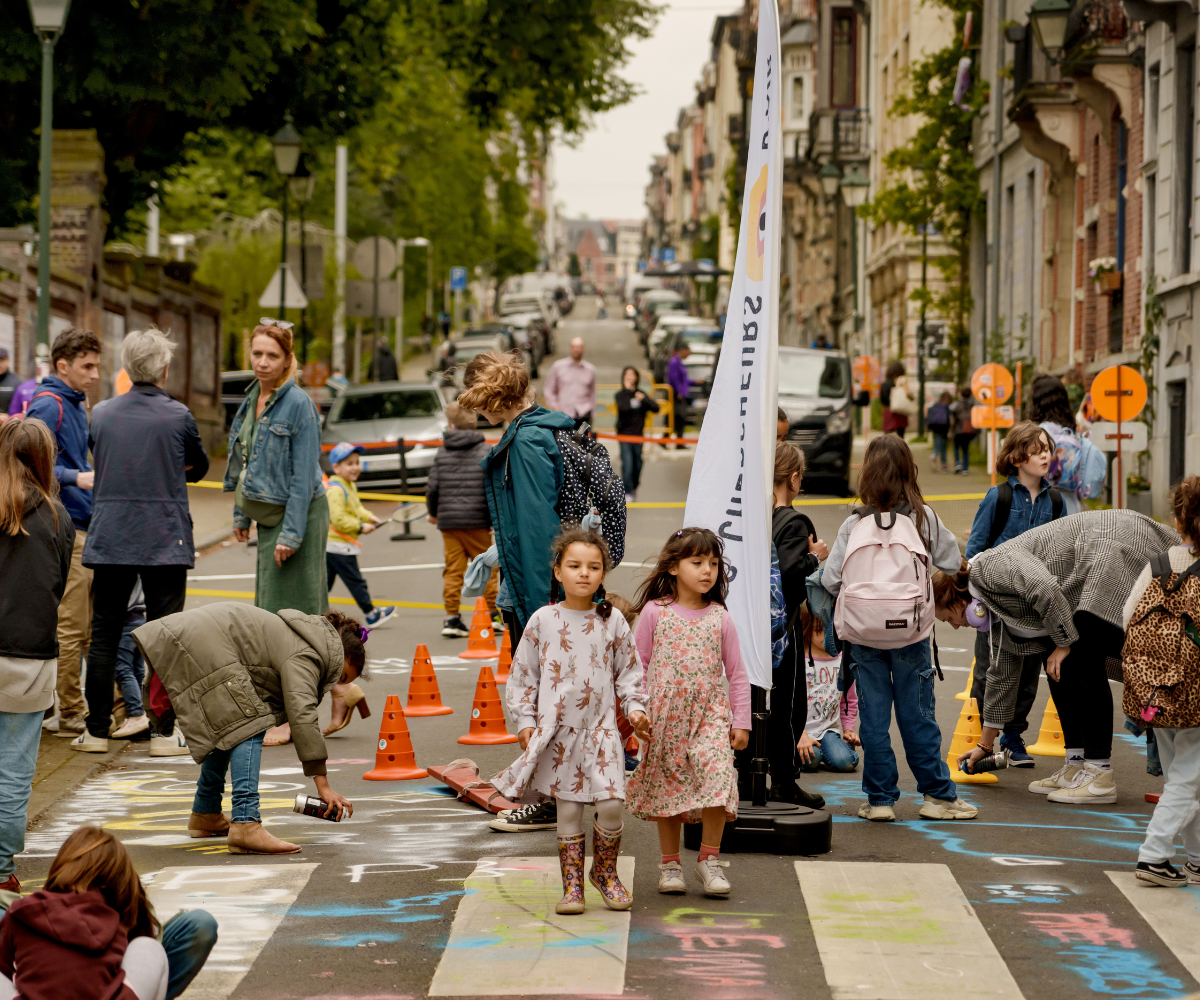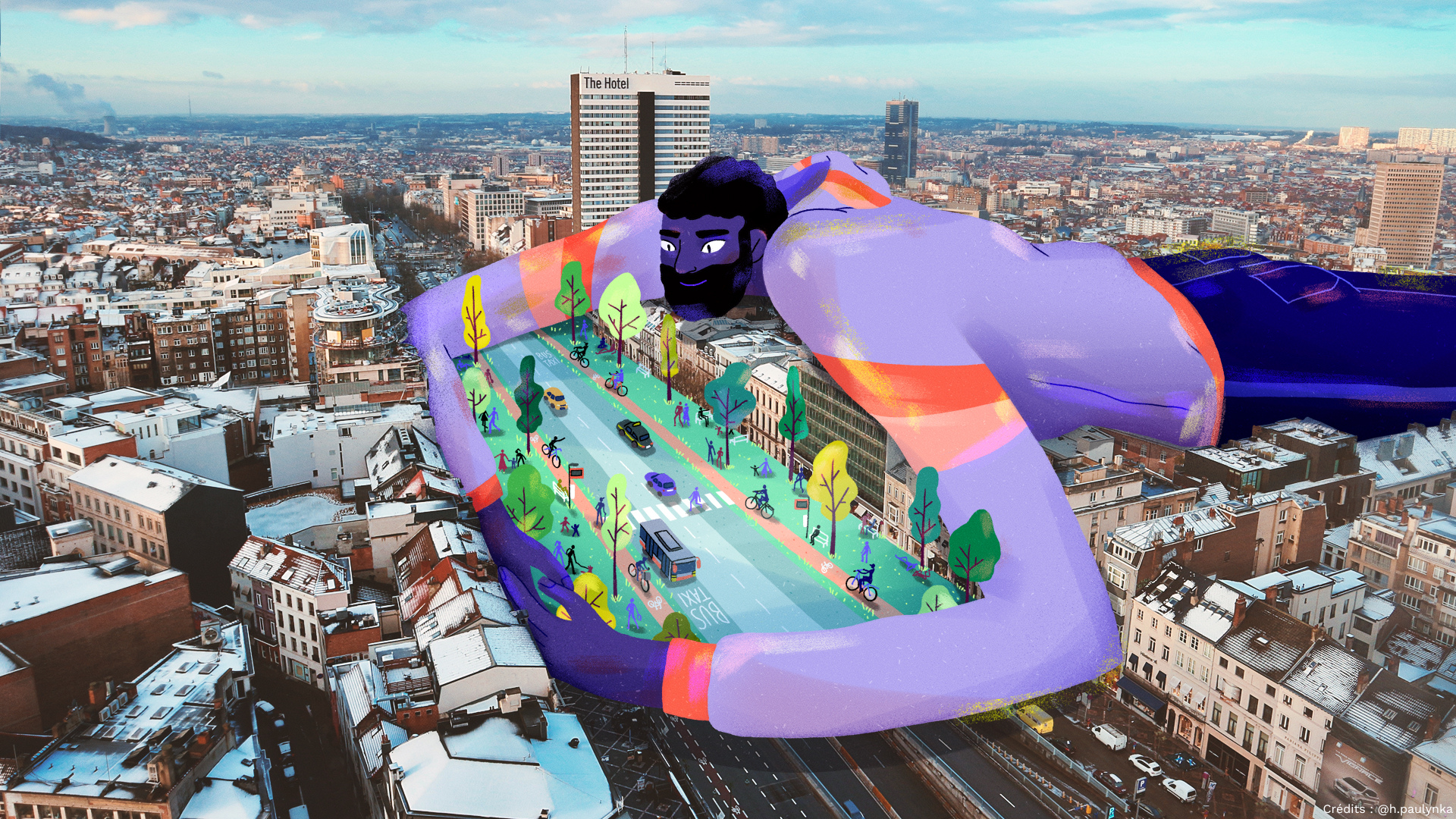Communes : quelles listes soutiennent les rues scolaires ?
Elections communales-
Quelles listes encouragent la création de rues scolaires
dans les communes ?
Dans le cadre des élections communales 2024, nous avons analysé le programme des listes qui se présentent dans les 19 communes bruxelloises. Nous avons noté, à chaque fois, si ces listes mentionnent, et donc soutiennent de manière proactive, les rues scolaires.
Il ressort de cette analyse les conclusions suivante :
- Le PTB-PVDA encourage la création de rues scolaires dans la majorité des communes où il participe aux élections.
- Ecolo encourage la création de rues scolaires dans la majorité des communes où ils participent aux élections.
- Groen encourage la création de rues scolaires dans la majorité des communes où ils participent aux élections.
- Vooruit encourage la création de rues scolaires dans la majorité des communes où ils participent aux élections.
- Le MR n’encourage pas la création de rues scolaires dans la majorité des communes où il participe aux élections.
- Le PS n’encourage pas la création de rues scolaires dans la majorité des communes où il participe aux élections.
- Le Engagés n’encouragent pas la création de rues scolaires dans la majorité des communes où ils participent aux élections.
- DéFI n’encourage pas la création de rues scolaires dans la majorité des communes où il participe aux élections.
- La N-VA n’encourage pas la création de rues scolaires dans la majorité des communes où il participe aux élections.
- Open VLD n’encourage pas la création de rues scolaires dans la majorité des communes où il participe aux élections.
- La position du CD&V n’est pas claire car nous n’avons pas trouvé tous les programmes.
- Pour la Team Fouad Ahidar, nous n’avons pas trouvé de programmes spécifiques à chaque commune. Nous avons seulement trouvé un programme général pour toutes les communes où cette liste se présente. Ce programme ne mentionne pas les rues scolaires.
Nous pouvons également noter que la création de rues scolaires est encouragée dans la majorité des listes à
- Evere
- Forest
- Ixelles
- Koekelberg
- Saint-Gilles
- Schaerbeek
- Watermael-Boitsfort
Par contre, dans les communes suivantes, la majorité des listes n’encourage pas la création de rues scolaires :
- Anderlecht
- Berchem-Sainte-Agathe
- Bruxelles Ville
- Etterbeek
- Ganshoren
- Jette
- Saint-Josse
- Uccle
- Woluwe-Saint-Lambert
Pour rappel, les rues scolaires permettent de mieux protéger les enfants de la pollution de l’air, du bruit et des risques d’accidents de la route. Elles créent également des opportunités de végétalisation des abords d’écoles.
À l’heure actuelle, seules 9% des écoles maternelles et primaires de la Région bruxelloise bénéficient d’une rue scolaire. Pourtant, d’après notre récente étude, les écoles fondamentales sont surexposées au dioxyde d’azote (NO2), parfois entre deux et trois fois au-dessus du seuil de l’OMS. Or le dépassement de ce dernier « est associé à des risques importants pour la santé publique.”
Une analyse que nous avons menée montre que 70% des écoles bruxelloises pourraient facilement être équipées d’une rue scolaire.
Abonnez-vous à notre newsletter pour être tenu.e au courrant de nos actions une fois par mois
140 experts ask for strong clean air measures in Brussels
140 health and environmental experts ask for strong clean air measures in Brussels
On World Health Day, a call, initiated by Belgian non-profit association Les chercheurs d’air, with the support of the Belgian Scientific Society of General Medicine (SSMG), and signed by 140 health and environmental experts, asks for strong measures to combat air pollution in the Brussels Region.
Dear candidates for the 2024 Brussels municipal and regional elections,
We, doctors, scientists, health institutions and environmental organisations, ask you, if elected, to do everything in your power to fully combat air pollution in the Brussels-Capital Region.
The Belgian capital city is one of the most polluted in Europe. It is exposed to high levels of fine particles and nitrogen dioxide (two pollutants emitted at 30% and 60% respectively by road traffic), sometimes well above the recommendations of the World Health Organization (WHO). In some places, the level exceeds the WHO guideline by 5 times for nitrogen dioxide and 2 times for fine PM2.5 particles.
Every year, more than 900 Brussels residents die prematurely due to poor air quality. This represents more than 2 deaths per day and more than 10% of mortality in the capital, from all causes combined.
Fine particles can end up in our bloodstream, passing through our lungs, and penetrating our hearts or our brains. Here is a long and yet not exhaustive list of health impacts caused by this pollutant: increased risk of cardiovascular disease, stroke, premature birth, attention deficit disorder in children, risk of dementia in the elderly, certain types of diabetes, and even certain cancers.
Nitrogen dioxide, an irritant gas, can contribute to the development of asthma, as well as increase the risk of respiratory infections and chronic lung difficulties (coughing, difficulty breathing, reduced sense of smell, bronchitis, allergies, etc.).
Children are particularly vulnerable to air pollution because their metabolism is still developing, they breathe more quickly and, due to their small size, they are closer to sources of pollution such as exhaust pipes. Fighting against air pollution therefore makes it possible to better protect the health of young people.
Generally speaking, air pollution also hits disadvantaged communities harder. Indeed, their access to green spaces, sports activities or a healthy diet is often difficult, which does little to counterbalance the harmful impacts of pollutants on their health. In addition, they are often more exposed to indoor air pollution, which further exacerbates the effects of outdoor pollution.
Air pollution is also a financial drain. In 2018 it cost the Brussels region 1.6 billion euros, or €1,400 on average per Brussels resident for this year alone.
The European Union is in the process of reviewing air quality standards, so that they are stricter and closer to the WHO recommendations. However, this will take time to implement and the new limits will remain insufficient to properly protect the health of Brussels citizens.
We, doctors, scientists, health and environmental organisations, therefore ask you, candidates to the 2024 regional and municipal elections, to commit clearly and firmly to fighting air pollution at local level during your mandate if you were to be elected.
This fight must go through:
- Strict maintenance of the Low Emissions Zone (LEZ) timeframe, namely an exit from diesel engines by 2030 and thermal engines by 2035 at the latest throughout the territory of the Brussels Region. The LEZ is, to date, the most effective tool to combat air pollution in the city. It has enabled nitrogen dioxide reductions of almost 40% in certain places.
- The development of low traffic neighbourhoods, like the one that has been set up in the centre of Brussels. The reduction in road traffic (by 15 to 20% in one year in the Pentagon district) implies a reduction in air pollution, but also in noise and the risk of accidents. This also frees up public space, which can then more easily be made greener.
- The creation, wherever possible, of pedestrian and green streets in front of schools. It has been proven (see here and there) that school streets make it possible to effectively combat air pollution. Children, who spend a large part of their time at school, are then better protected from pollution.
- A strong incentive to use collection points, rather than home delivery, for parcels, size and weight permitting. Deliveries, most often made by diesel vans, are a growing source of air pollution. However, 60% of Brussels residents live less than 5 minutes on foot and 98% less than 10 minutes from a relay point.
- The development of car sharing to reduce the number of vehicles in the city. In fact, a shared car replaces several private cars, which helps fight air pollution. This optimization of vehicles also makes it possible to free up parking spaces and, thus, create opportunities for greening and/or increasing the space dedicated to active mobility.
- Increasing the network of cycle paths separated from traffic on roads with heavy traffic. We recommend favouring, as soon as possible, the creation of infrastructures that are quick to implement and inexpensive, in order to ensure good security conditions in the short term (without waiting for the creation of large-scale projects).
We thank you in advance for your clear and strong commitment to the health of all Brussels residents.
Kind regards,
– Pierre Dornier, Director, Les chercheurs d’air
– Marelli Andrea, Nurse
– Philippe Bastenier, General practitioner
– Amandine Ben Abbou, General practitioner
– Fleur Benghiat, General practitioner
– Cyril Berthault-Jacquier, Buyer, Cliniques de l’Europe
– Céline Bertrand, Pediatric nurse, public health and environmental medicine teacher, SSMG member
– Jessica Beurton, General practitioner
– Flora Billiouw, Midwife, Wheel of Care
– Jean-Claude Bollaerts, General practitioner
– Catherine Bouland, Professor at the Université Libre de Bruxelles, Research center for environmental health and workplace health
– Marie-Laure Boulangé, General practitioner
– Xavier Brenez, Executive director, Mutualités Libres
– Antoinette Brouyaux, Coordinator, Associations21
– Marie Bruyneel, Pulmonologist
– Wies Callens, Spokesperson, Fietsersbond
– Julie Catala, General practitioner
– Janet Catherine, General practitioner
– Véronique Chalon, Employee at Ribaucare Espace Social Santé Intégré
– Cédric Chevalier, Essayist
– Clarisse Chomat, Physiotherapist
– Sébastien Cleeren, General practitioner, SSMG
– Patrick Colart, Gynaecologist
– Prof. Dr. Bruno Colmant, Member of the Académie Royale de Belgique
– Benoit Coppens, General practitioner
– Gaetane Coppens, Chemist, teacher
– Patricia Cornejo Lucaveche, General practitioner
– Mathilde Costantini, General practitioner
– Marie Coulon, General practitioner
– Nina Covalski, Social worker in a health center
– Pauline Crespin, General practitioner
– Amine Dahmane, General practitioner
– Paul De Munck, General practitioner
– Constance De Viron, General practitioner
– Caroline De Voecht, Junior buyer and sustainability manager, Cliniques de l’Europe
– Aurélie Debande, General practitioner
– Elisabeth Defourny, General practitioner
– Isabelle Defrance, Pharmacist
– Valérie Del Re, Director, Greenpeace Belgique
– Anne Delfosse, General practitioner
– Guillaume Delhay, General practitioner
– Juliette Demey, Physiotherapist
– Emilie Desbonnez, General practitioner
– Anne Devedeleer, General practitioner
– Florence Devuyst, General practitioner
– Thomas Deweer, Advocacy coordinator, Fietsersbond
– Valérie Dinh, General practitioner
– Hélène Dispas, General practitioner
– Joachim Docquir, Paediatrician
– Aurélie Dory, General practitioner
– Virginie Dufour, General practitioner
– Thomas Duponcheel, General practitioner
– Patrick Dupriez, President, Etopia
– Romain Dury, General practitioner
– Pauline Dutron, Coordinator, Les amis de la Terre
– Fatiha El Hajjami, General practitioner
– Simon Elst, Nurse, student in environmental health at École de Santé Publique, ULB
– Reza Esmaeilzadeh, Energy and Sustainable development expert, Hôpitaux Iris Sud
– Jean-François Fauconnier, Environmental engineer
– Benjamin Fauquert, General practitioner, teacher at ULB
– Javier Fernandez, General practitioner
– Kim Fernandez, Researcher
– Jamie Lee Fossion, Coordinator health center / ULB
– Véronique Godding, Pediatric pulmonologist, tabacologist
– Pierre Hallet, General practitioner
– Fanny Hanssens, General practitioner
– Aminatou Haouaou, General practitioner
– Antigone Hatzfeld, General practitioner
– Grégoire Hautain, Management accountant, Chirec
– Jean-Philippe Hauzeur, Reumatologist, professor at ULB
– Alexandre Heeren, Professor UCLouvain, researcher F.R.S.-FNRS
– David Hercot, Public health advisor
– Christophe Heylbroeck, General practitioner, deputy director Mutualités Libres/Onafhankelijke Ziekenfondsen
– Edouard Hosten, Emergency doctor
– Vincent Huberland, General practitioner
– Dragos Ifrim, Anaesthetist
– Chloé Joris, Pediatric pulmonologist-allergist
– Elise Kains, General practitioner
– Paul Kelchtermans, General practitioner
– Emilie La, General practitioner
– Gaëtane Ladrier, General practitioner
– Romain Lappeman, General practitioner
– Miguel Lardennois, Nurse, health advisor
– Eléonore Lefebvre, General practitioner
– Carole Lekeux, General practitioner, SSMG member
– Guillaume Leleu, General practitioner
– Roger Leonard, General practitioner
– Laurence Lewalle, Director, GRACQ
– Lauranne Leysen, General practitioner in training
– Laurent Lievens, University lecturer and researcher
– Catherine Luyten, Dermatologist
– Denis Mannaerts, Director, Cultures et Santé asbl
– Laetitia Marlier, General practitioner
– Philippe Marneth, General practitioner, director Mutualités Libres
– Quentin Mary, General practitioner, SSMG president
– Audrey Masset, Nurse
– Guy Masson, General practitioner
– Sandrine Mathieu, Geriatrician
– Jeffrey Matthijs, Director, Autodelen.net
– Sylvie Meekers, Executive director, Canopea
– Larissa Mélot, General practitioner
– Ann Morissens, President, working group “intermutualiste” on environmental health
– Tim Nawrot, Environmental epidemiology professor
– Mathilde Noiset, General practitioner
– Marie Nolet, General practitioner
– Catherine Oblin, General practitioner
– Alexia Orban, General practitioner
– Patricia Palacios, General practitioner, SSMG member
– Jean Pauluis, General practitioner, SSMG member
– Raf Pauly, Coordinator, BRAL
– Martine Picard, General practitioner
– Stéphanie Richard, Consultant and nurse trainer, Care-act-terre
– Caroline Rombeau, Psychologist
– Elisa Rombouts, General practitioner
– Perrine Rondelet, General practitioner
– Miguel Rosal Martins, Nurse, health advisor
– Maëlle Sallets, General practitioner
– Pauline Scarnière, General practitioner
– Christina Doris Schmidt-Wirth, General practitioner
– Catherine Scott, General practitioner
– Maelle Sens, General practitioner
– Jean-Christophe Servotte, Research manager, Hénallux
– Vinciane Sizaire, Director, FARES
– Nicolas Stocké, Project manager, Partenamut
– Ugo Taddei, Transport Director, ClientEarth
– Sarah Tak, Coordinator Klimaatzaak – Affaire Climat
– Françoise Tennstedt, General practitioner
– Chloé Thiry, General practitioner
– Lauriane Tribel, Project manager CSR, CHIREC
– Luc Van Gorp, President, Mutualité chrétienne
– Laurence Van Lierde, General practitioner
– Eric Van Poelvoorde, Environmental civil servant
– David Van Reybrouck, Author, ambassador Affaire Climat
– Jean-Pascal van Ypersele, Professor emeritus UCLouvain, ex IPCC Vice-President
– Noemie Vanackere, General practitioner
– Maureen Vandenbroucke, Paediatrician
– Cécile Vanheuverzwijn, General practitioner
– Pascale Vanoldeneel, General practitioner, hospital practitioner
– Céline Vanschepdael, General practitioner
– Karin Verbist, General practitioner
– Paul Vollemaere, General practitioner
– Christophe Winkel, Director, Provélo
– Halil Yildiz, Internist, professor, University clinics St Luc
Abonnez-vous à notre newsletter pour être tenu.e au courrant de nos actions une fois par mois


